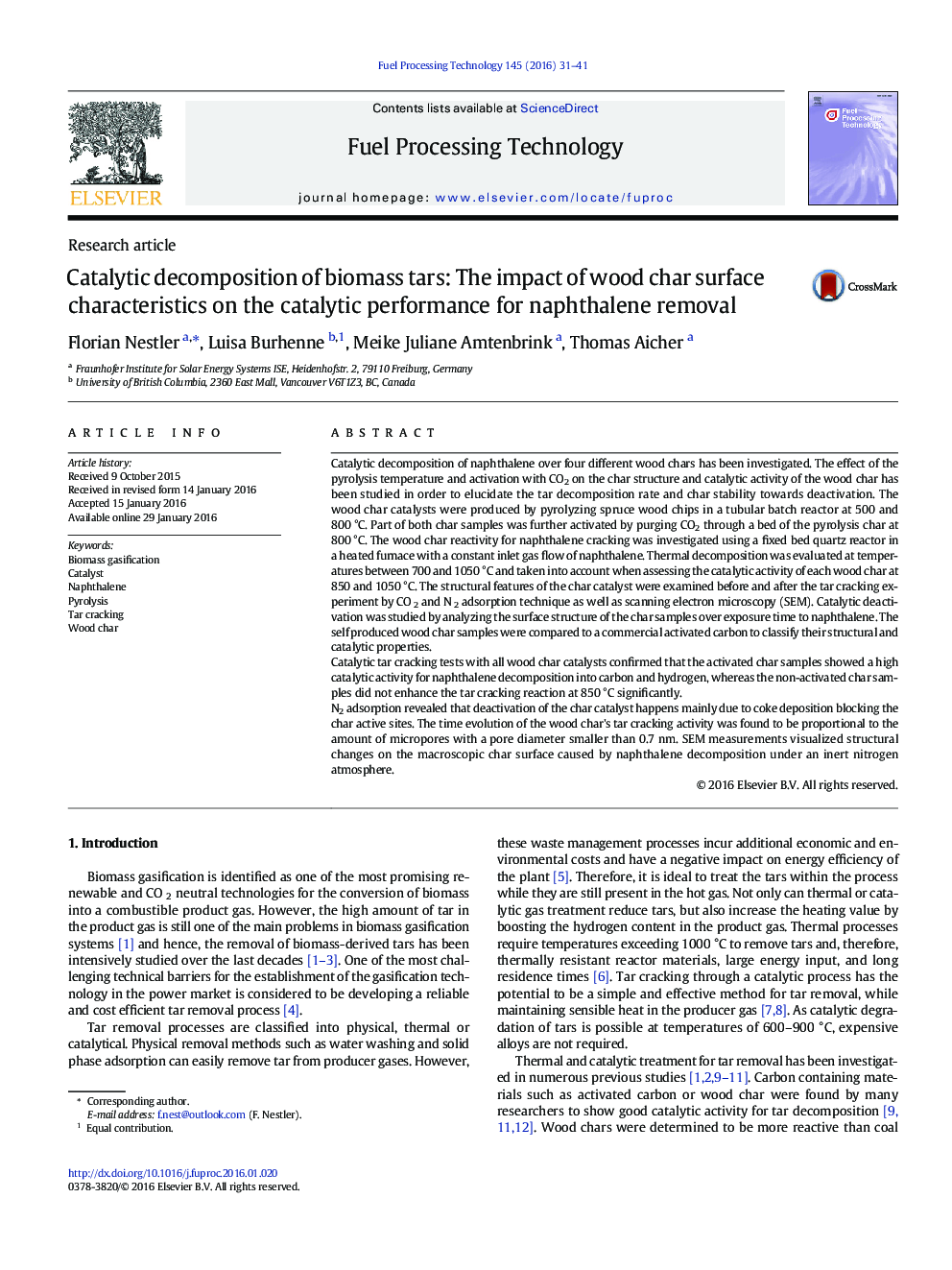| کد مقاله | کد نشریه | سال انتشار | مقاله انگلیسی | نسخه تمام متن |
|---|---|---|---|---|
| 209133 | 461657 | 2016 | 11 صفحه PDF | دانلود رایگان |
• Naphthalene removal over a fixed bed of wood char was investigated.
• Char activation with CO2 significantly increased naphthalene decomposition activity.
• Char catalyst deactivation was due to coke depositions on micropores only.
• Catalyst pore blocking was observed by both SEM and BET analysis.
• Catalytic naphthalene conversion was mainly affected by microporous char structures.
Catalytic decomposition of naphthalene over four different wood chars has been investigated. The effect of the pyrolysis temperature and activation with CO2 on the char structure and catalytic activity of the wood char has been studied in order to elucidate the tar decomposition rate and char stability towards deactivation. The wood char catalysts were produced by pyrolyzing spruce wood chips in a tubular batch reactor at 500 and 800 °C. Part of both char samples was further activated by purging CO2 through a bed of the pyrolysis char at 800 °C. The wood char reactivity for naphthalene cracking was investigated using a fixed bed quartz reactor in a heated furnace with a constant inlet gas flow of naphthalene. Thermal decomposition was evaluated at temperatures between 700 and 1050 °C and taken into account when assessing the catalytic activity of each wood char at 850 and 1050 °C. The structural features of the char catalyst were examined before and after the tar cracking experiment by CO 2 and N 2 adsorption technique as well as scanning electron microscopy (SEM). Catalytic deactivation was studied by analyzing the surface structure of the char samples over exposure time to naphthalene. The self produced wood char samples were compared to a commercial activated carbon to classify their structural and catalytic properties.Catalytic tar cracking tests with all wood char catalysts confirmed that the activated char samples showed a high catalytic activity for naphthalene decomposition into carbon and hydrogen, whereas the non-activated char samples did not enhance the tar cracking reaction at 850 °C significantly.N2 adsorption revealed that deactivation of the char catalyst happens mainly due to coke deposition blocking the char active sites. The time evolution of the wood char's tar cracking activity was found to be proportional to the amount of micropores with a pore diameter smaller than 0.7 nm. SEM measurements visualized structural changes on the macroscopic char surface caused by naphthalene decomposition under an inert nitrogen atmosphere.
Journal: Fuel Processing Technology - Volume 145, May 2016, Pages 31–41
